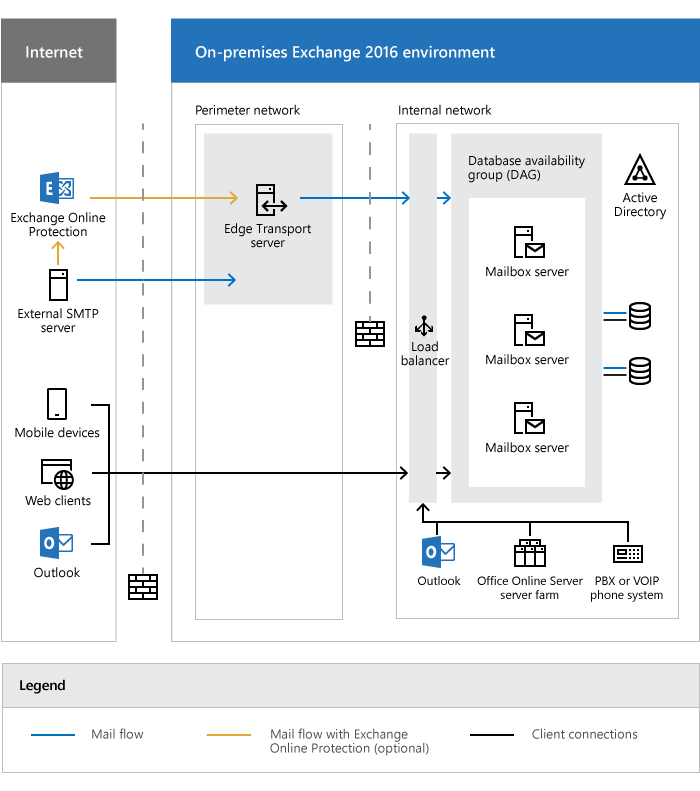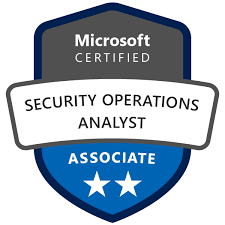Audience
This course is intended for IT professionals who are experienced messaging administrators, messaging architects, or consultants. This course is designed for professionals in an enterprise environment who are responsible for designing and deploying Exchange Server 2016 solutions, including environments that contain previous versions of Exchange Server or Exchange Online. Students are expected to have experience with Exchange Server 2016 or previous versions of Exchange Server.
This course is also intended as preparation material for IT professionals who are looking to take the 70-345: Designing and Deploying Microsoft Exchange Server 2016 exam as part of the requirement for the MCSE: Microsoft Exchange Server 2016 certification.
Prerequisites
Before attending this course, students must have:
• A+ certification or equivalent knowledge.
• Network+ certification or equivalent knowledge.
• Completed Course 2028A, Basic Administration of Microsoft Windows 2000, or have equivalent knowledge of administrative tasks.
In addition to professional experience, students who attend this training should already have the following technical knowledge:
• Attended course 20345-1A: Administering Exchange Server 2016, or have equivalent knowledge.
• Minimum two years of experience working with any version of Exchange Server.
• Minimum of six months of experience working with Exchange Server 2013 or Exchange Server 2016.
• Minimum of two years of experience administering the Windows Server 2012 R2.
• Minimum two years of experience working with Active Directory Domain Services (AD DS).
• Minimum of two years of experience working with name resolution, including Domain Name System (DNS).
• Experience working with certificates, including public key infrastructure (PKI) certificates.
• Experience working with Windows Powershell.
Skills Gained
After completing this course, students will be able to:
- Plan for Exchange Server deployments.
- Plan and deploy Exchange Server 2016 Mailbox services.
- Plan and deploy message transport.
- Plan and deploy client access.
- Design and implement high availability.
- Maintain Exchange Server 2016.
- Design messaging security.
- Design and implement message retention.
- Design messaging compliance.
- Design and implement messaging coexistence.
- Upgrade to Exchange Server 2016.
- Plan a hybrid Exchange Server deployment.
Course outline
Module 1: Planning Exchange Server 2016 deployments
This module explains the requirements and considerations for planning an Exchange Server deployment.
Lessons
• New features in Exchange Server 2016
• Gathering business requirements for an Exchange Server 2016 deployment
• Planning for an Exchange Server deployment
• Designing a Unified Messaging (UM) deployment
Lab: Planning Exchange Server 2016 deployments
• Evaluating an existing messaging infrastructure
• Identifying requirements
• Discussion: Deployment design for Exchange Server 2016
After completing this module, students will be able to:
• Describe the new features in Exchange Server 2016.
• Describe how to gather business requirements for an Exchange Server 2016 deployment.
• Plan for an Exchange Server 2016 deployment.
• Design a UM deployment.
Module 2: Planning and deploying Exchange Server 2016 Mailbox services
This module explains how to plan and deploy Exchange Server hardware, virtualization, mailbox databases, and public folders.
Lessons
• Planning Exchange Server hardware requirements
• Planning Exchange Server for virtualization and Microsoft Azure integration
• Planning and implementing public folders
Lab: Planning and implementing Exchange virtualization, mailbox databases, and public folders
• Planning for virtualization
• Planning for mailbox databases
• Implementing mailbox databases
• Planning and implementing public folders
After completing this module, students will be able to:
• Plan for the Exchange Server hardware requirements.
• Plan Exchange Server for virtualization and Azure integration.
• Plan and implement public folders.
Module 3: Planning and deploying message transport
This module explains how to plan and implement mail routing internally from and to the Internet, and transport-related tasks in the organization.
Lessons
• Designing message routing
• Designing transport services
• Designing the message-routing perimeter
• Designing and implementing transport compliance
Lab: Planning and deploying message transport
• Planning for a redundant and secure message transport
• Planning for transport compliance
• Implementing transport compliance
After completing this module, students will be able to:
• Design message routing.
• Design transport services.
• Design message routing in a perimeter network.
• Design and implement transport compliance.
Module 4: Planning and deploying client access
This module explains how to plan for client connectivity and client access in Exchange Server 2016. This module also describes how to implement Microsoft Office Online Server, and the coexistence of SharePoint 2016 with Exchange.
Lessons
• Planning for Exchange Server 2016 clients
• Planning for client access
• Planning and implementing Office Online Server
• Planning and implementing coexistence of SharePoint 2016 with Exchange
• Designing external client access
Lab: Planning and deploying client access solutions
• Planning and configuring namespaces
• Planning and configuring client access services options
• Planning and deploying Office Online Server
• Planning and implementing reverse proxy
After completing this module, students will be able to:
• Plan for Exchange 2016 Server clients.
• Plan for client access.
• Plan and implement Office Online Server.
• Plan and implement SharePoint 2016 and with Exchange Server 2016 coexistence.
• Design external client access.
Module 5: Designing and implementing high availability
This module explains how to design and implement a highly available solution for Exchange Server 2016.
Lessons
• Planning high availability for Exchange Server 2016
• Planning for load balancing
• Planning for site resilience
Lab: Designing and implementing site resiliency
• Creating a lag database copy
• Recovering data from a lagged database copy
• Implementing site resilience
• Validating site resilience
After completing this module, students will be able to:
• Plan high availability for an Exchange Server 2016 deployment.
• Plan for load balancing in an Exchange Server 2016 deployment.
• Plan for site resilience in an Exchange Server 2016 deployment.
Module 6: Maintaining Exchange Server 2016
This module explains how to maintain Exchange Server 2016 using Managed Availability and Desired State Configuration (DSC).
Lessons
• Using Managed Availability to improve high availability
• Implementing DSC
Lab: Maintaining Exchange Server 2016
Schedule
Our minimum class-size is 3 for this course.
This can be customized to suit the time schedule and skills needs of clients and may be held online or at our site or your premises.
Email info@datavizionsystems.com to arrange for a custom course.








Reviews
There are no reviews yet.